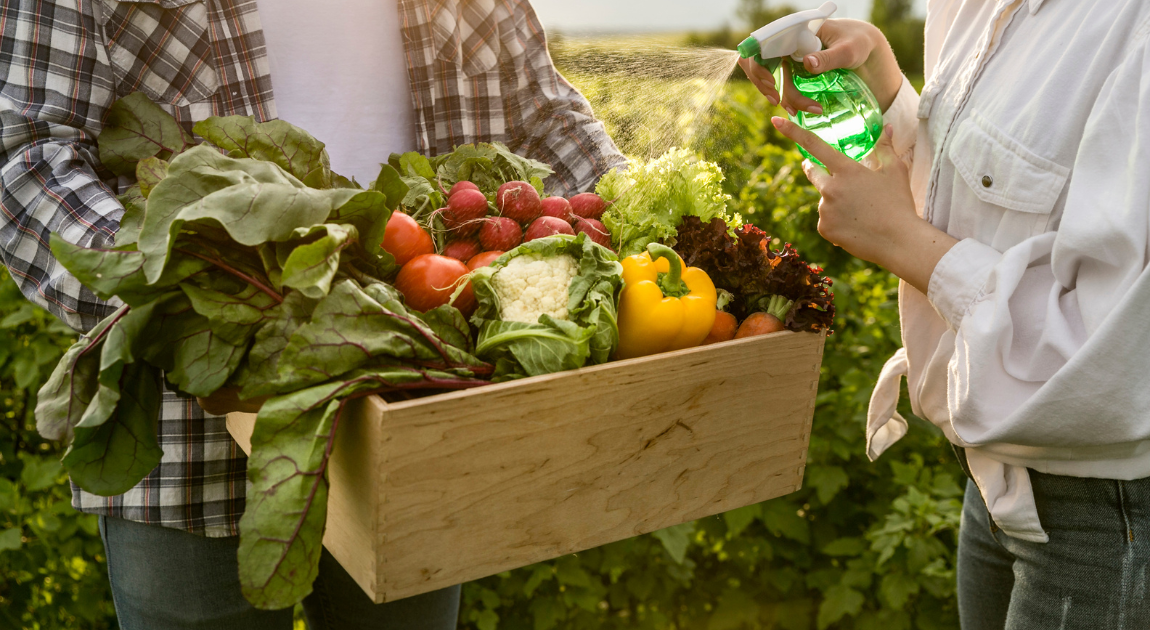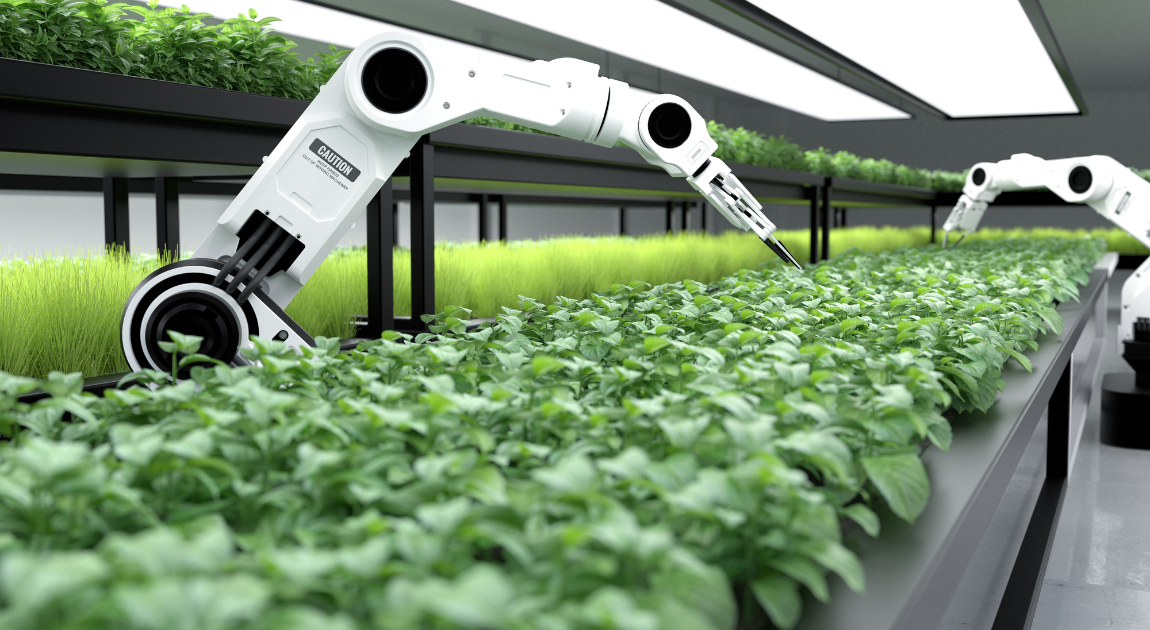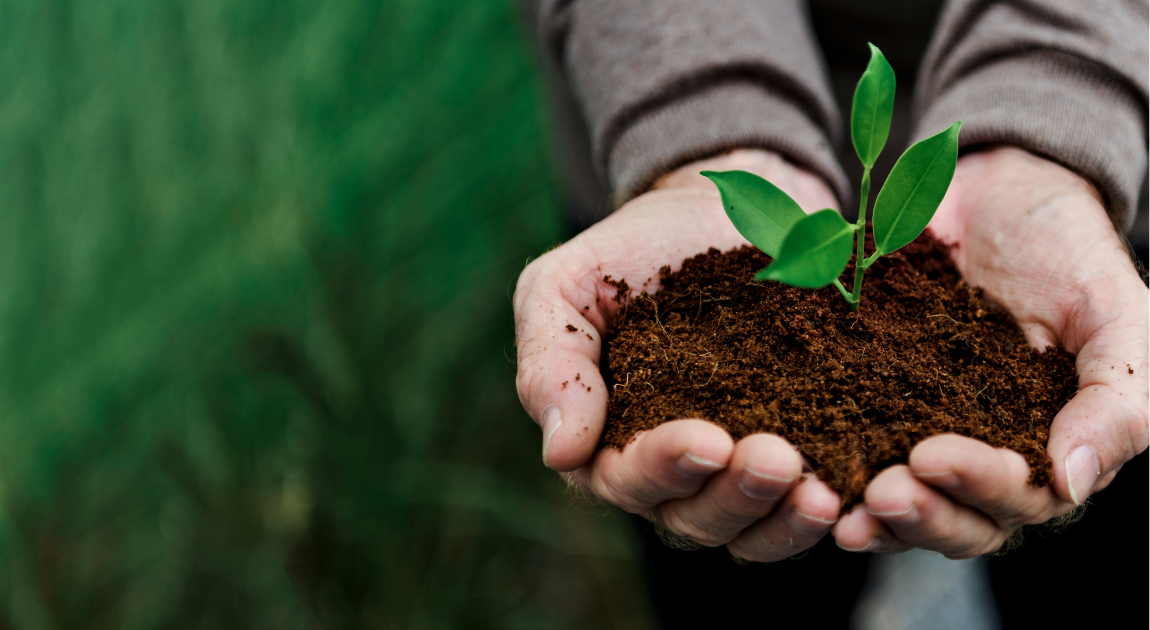Probably only those working in agriculture supply chain management actually think about how many things are needed to produce a humble loaf of bread. Some of these things – like pesticides, electricity for pumps, robotics, and offices, fuel for transport, and shelf spaces in warehouses – are wasted mercilessly, and often also half of that loaf that’s gotten stale. Multiplying that by how many loaves there are will yield an entire crop of lost dollars for businesses and consumers alike, not to mention the snowballing effects of soil erosion and ecological impact.
Thankfully, it is now possible to optimize agri-food supply chains for both business efficiency and sustainability – so let’s look at some factors at play, best practices, and tech solutions to the issue.
Understanding agriculture supply chain management
The agriculture supply chain is, by definition, a large bundle of processes: procuring the necessary goods to grow produce, and then actually growing, storing, processing, and transporting agricultural products of different types. The global agricultural supply chain was valued at about $4.4 trillion in 2023 – but a large part of that value is obscured by inefficiencies like food loss and waste.
With roughly 1/3 of all food produced wasted (about 931 mln tonnes), this is not just a problem for the consumers and businesses, but for the environment, as well – impacting future sales from several fronts. And a large part of this is preventable, boiling down to logistics and technology choices. However, these, in turn, are influenced by several gigantic underlying forces:
| Differences in tech | Even though adoption of IoT sensors has risen ~60% over 3 years and drone use by up to 75% since 2020, many sub-chains still rely on manual and fragmented systems, so the entire system is as strong as the weakest link. |
| Climate risk & volatility | Extreme weather (heatwaves, droughts, floods) means disruption: coffee and cocoa prices more than doubled in 2024, sunflower‐oil up 56%, which impacts risks and decisions taken. |
| Infrastructure & logistics | Cold‑chain logistics account for up to 50–60% of transport costs, and transportation or warehousing inefficiencies add up to 25–30% food loss along the chain. |
| Regulatory & traceability pressures | Consumer demand and regulation push increased transparency; traceability platforms reduce contamination incidents by up to 50%, plus consumers are getting more aware of the need. |
| Supply chain complexity & global risks | Globalization, geopolitical tensions, export restrictions, trade wars, and pandemics often make the systems even more fragile. |
Meanwhile, the different players along the agri-food supply chain have different motifs and aspirations. Farmers are striving to minimize spoilage and post-harvest losses, and ensure reliable financing/insurance, as well as fairer pricing (which is an additional push for traceability).
Distributors, exporters, processors, and retailers, on the other hand, are concerned with efficiency (so spoilage prevention is a priority, too) – but also about their own kind of resilience against shocks, with diversified sourcing, and better risk management.
Finally, consumers and regulators want not just lower prices but higher safety; thankfully, more thought is now given to minimizing carbon footprints, too.
These different vectors can and must be summed up, and the good news is that since the agricultural supply chain is far from being a simple solid object, it isn’t going to be like a school physics class, with all of the forces adding up to a small resulting vector. In fact, the reasons for optimizing agri-food supply chains are multiple even in case with an individual company.
Why optimize agri-food supply chains?
Supposing you’re a company that occupies a particular place in the agri-food supply chain, what could motivate you to optimize your link (and the rest of the supply chain by extension)? The benefits of improving agricultural supply chain include the following:
- Sustainability and environmental impact. For example, precision agriculture can reduce water use by up to one-fourth, as well as minimize the amount of pesticides needed.
- Waste reduction and food security. Real-time tracking like IoT and RFID can reduce spoilage by up to 20% (since you can react faster to things like temperature deviations, etc.) – while inventory optimization, in turn, prevents overstocking.
- Cost savings and profitability. With reduced delays and spoilage you can then use tech to further save on operations. Various digital supply chain solutions can help reduce operational costs by up to 30% and make sure as many sales happen as possible.
- Market access and competitiveness. Traceability and sustainability also help access premium markets and improve margins. At the same time, blockchain-based crop insurance can even help increase coverage access for smallholders by making premium costs more affordable.
- Resilience and risk reduction. Optimization also involves managing risks from climate volatility, geopolitical hurdles, and the like. Especially with the advent of AI, responses to these factors can be calculated well in advance.
- Traceability, safety, and consumer trust. Adoption of traceability solutions grew over 55% in 2022 alone, as around 70% of consumers prefer brands with transparent sourcing.
In brief, optimizing the agri-food supply chain with sustainability in mind also turns out to help the business side of things. In fact, we have an article about how sustainability-related solutions like precision agriculture are getting more sensible profit-wise, and more affordable.
Sustainable practices within and beyond agricultural production
So with that in mind, let’s look at some of the most promising practices for the agricultural supply chains – across both production and logistics.
Conservation agriculture & soil health
Conservation agriculture techniques (no-till, cover cropping, crop rotation) help reduce soil erosion and increase carbon sequestration. It’s also good for operations: by FAO estimates, no-till farming can save about 30-40% of fuel and labor compared to conventional tillage. Meanwhile, cover crops support the necessary microbial activity and biodiversity – the invisible forces that contribute to resilience in changing climates. Regenerative agriculture has also shown nice results, with General Mills reporting a 7% reduction in scope 3 emissions and improvements in soil health.
Water conservation & biodiversity enhancement
Precision irrigation, with drip systems and the like, can help use water sparingly while maintaining yields. At the same time, intercropping, hedgerows, and pollinator habitats not only allow for natural pest control but improve yields, too.
Circularity, waste reduction & renewable energy
What goes into agricultural production and livestock farming can also be optimized. Zero-waste agriculture is already a developing area where waste from one process becomes input for another (e.g. biogas from animal or plant residues). Supply chains using bio-based or biodegradable packaging increased by 40% in 2022, reflecting growing circular economy adoption.
At the same time, farms increasingly power operations with renewable energy like solar and wind, reducing fossil fuel reliance and offering energy independence.
Ethical sourcing, farmer partnerships & social equity
The human factor of agricultural sustainability is as important as tech. Not only are there collaborative sourcing models like assured buyback at pre-decided prices that allow farmers to have more predictable outcome (which they can then use to afford tech) – it is now easier for smallholders to get onboarded in tech-reliant practices, too, with mobile apps and geo-tagged plots.
Traceability
Technologies like blockchain, IoT, and QR codes enable traceability from farm to fork. With blockchain, consumers can verify origin, production method, ESG credentials, and bio‑carbon footprint. At the same time, IoT and other tech can improve (and automate) traceability-related workflows to the point where the required effort is almost nullified.
Tech solutions for agriculture supply chain management
One question is, what technologies are used in general at different links of the agriculture supply chain. Quite another, what technologies have the potential to transcend the boundaries between production, procurement, warehousing, and transportation.
These latter solutions are especially valuable to optimize the entire chain since they establish interconnected flows of data and initiate what can be called “chain reactions” of optimizing things across the ecosystem:
- IoT sensors & precision agriculture – while data on plant and livestock health, moisture, pests, etc. from sensors and drones is primarily used for precise irrigation and inputs, this directly affects procurement.
- AI-driven farm management – in crop monitoring, AI analytics can predict pest outbreaks with ~85% accuracy, while autonomous tractors and robotic weeders reduce labor costs by up to 40%. This, in turn, makes things easier in terms of inventory management and warehousing.
- Demand forecasting and planning – AI boosts forecasting accuracy by 20–50%, reducing lost sales by up to 65%, and improving inventory levels by ~35%, which is especially important for seasonal crops.
- AI in cold storage – essentially the best practices of AI and computer vision from modern WMS applied to agricultural specifics, optimizing pallet placement and thus ensuring as few lost sales as possible (which also reduces the strain on transportation).
- Route and load optimization – proper logistics algorithms can reduce transportation costs by 10–20%, improve delivery times by up to 30%, and, in turn, optimize warehouse space use.
- Real-time inventory systems – reducing overstocking and increasing inventory accuracy helps react better to the rock and a hard place that is the supply and demand in the agri-food industry.
- Blockchain and QR for traceability – platforms like OpenSC use blockchain and QR-enabled tracking to provide transparent provenance, helping verify sustainable sourcing across complex supply chains.
- Predictive maintenance for machinery – sensor-based AI can forecast equipment failures, reducing downtime by up to 45% and cutting maintenance costs by 20–30%.
Conclusion: the future of agriculture supply chains
Agri-food supply chains are becoming more complex, but also more flexible. The general attempt to balance business sensibilities, sustainability, and resilience is already creating solutions that untie this Gordian knot from various angles.
What can already be said about the near future (think the next two decades) is that there’s going to be lots of technology – IoT, AI, blockchain – involved, but ultimately, its largest role will be quite unforeseen. Instead of simply spitting more and more data at everyone, tech is likely to function as both a reflection of new business models, and a factor in establishing these models.
Even today, we’re seeing more new types of businesses and collaborations centered around SaaS solutions and jointly used infrastructures and fragments of supply chains. In the upcoming years, the demand for diversification will probably open the door to many tech-empowered businesses that would otherwise be derided. In a way, that’s what happened with vertical farming and circular agriculture endeavors before, only this time, this will be amplified with more technology, and regulations, as well.
We at Lionwood.software are already seeing some of these effects in action, with a growing emphasis on visibility and traceability, for example. With agricultural projects being one of our priorities, our experts are ready to assist in creating custom solutions for agricultural supply chain optimization.
FAQ
Why is optimizing the agriculture supply chain important now more than ever?
Optimizing the agri-food supply chain has become critical due to rising food waste, increasing climate volatility, and growing consumer demand for sustainable practices. With one-third of all food produced globally going to waste—amounting to 931 million tonnes—businesses are under pressure to reduce inefficiencies. Modern tech like IoT, AI, and blockchain now make it possible to improve efficiency while supporting environmental and economic goals.
What are the biggest challenges in agriculture supply chain management today?
Key challenges include infrastructure inefficiencies (especially in cold-chain logistics), climate-related disruptions, and uneven tech adoption across supply chain actors. Additionally, increased regulatory demands and consumer expectations for transparency require companies to adopt traceability solutions, which may be costly or complex for small-scale operations.
How can technology help reduce food waste along the supply chain?
Technologies such as IoT sensors and AI-powered analytics help monitor conditions in real time, reducing spoilage through better inventory management and early intervention. For instance, cold storage optimization can reduce food loss significantly, while predictive analytics can cut lost sales by up to 65% through better demand forecasting.
What are some examples of sustainable practices beyond farming?
Beyond production, sustainability extends into logistics and packaging. Practices like renewable energy use on farms, zero-waste processing models, and biodegradable packaging materials are increasingly common. Blockchain-enabled traceability also promotes ethical sourcing and builds consumer trust.
How does supply chain optimization support smallholder farmers?
Optimization efforts that include mobile tech, AI, and blockchain-based insurance models can help smallholders access markets, stabilize income, and adopt climate-smart practices. For example, pre-agreed pricing contracts or digital crop monitoring tools give them more predictability and leverage within the chain.














